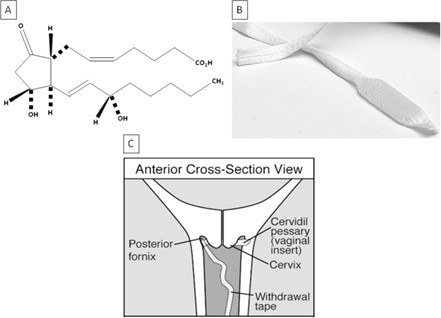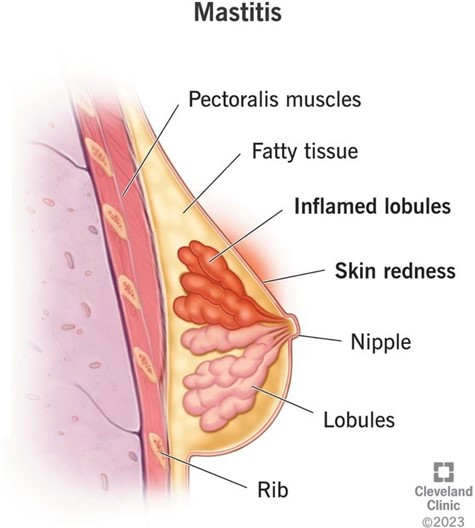A nurse is preparing to administer dinoprostone gel to a client who is pregnant. The client asks the nurse about the purpose of the medication. Which of the following responses should the nurse make?
Dinoprostone stimulates uterine contractions.
Dinoprostone promotes softening of the cervix.
Dinoprostone relaxes uterine contractions.
Dinoprostone assists with ending the pregnancy.
The Correct Answer is B
Choice A reason:
Dinoprostone stimulates uterine contractions is incorrect, as this is not the primary purpose of the medication. Dinoprostone is a prostaglandin that can induce labor by ripening the cervix and enhancing uterine contractility, but it is not used solely for stimulating contractions.
Choice B reason:
Dinoprostone promotes softening of the cervix is correct, as this is the main purpose of the medication. Dinoprostone is used to prepare the cervix for labor by increasing its softness, dilation, and effacement. This can facilitate the descent of the fetus and shorten the duration of labor.
Choice C reason:
Dinoprostone relaxes uterine contractions is incorrect, as this is the opposite effect of the medication. Dinoprostone can increase uterine tone and frequency, which can help initiate or augment labor. The nurse should monitor the client for signs of uterine hyperstimulation or fetal distress.
Choice D reason:
Dinoprostone assists with ending the pregnancy is incorrect, as this is not the intended use of the medication. Dinoprostone can be used to terminate a pregnancy in some cases, such as fetal demise or missed abortion, but it is not routinely used for this purpose. The nurse should explain to the client that dinoprostone is used to induce labor and not to end a pregnancy.

Nursing Test Bank
Naxlex Comprehensive Predictor Exams
Related Questions
Correct Answer is C
Explanation
Choice A reason: Three fingerbreadths above the umbilicus is incorrect, as this position indicates a higher than expected fundal height for a client who is 12 hr postpartum. The fundus is normally at the level of the umbilicus immediately after birth and then descends about one fingerbreadth per day. A high fundal height can indicate uterine atony, retained placental fragments, or bladder distension.
Choice B reason: One fingerbreadth above the symphysis pubis is incorrect, as this position indicates a lower than expected fundal height for a client who is 12 hr postpartum. The fundus is normally at the level of the umbilicus immediately after birth and then descends about one finger-breadth per day. A low fundal height can indicate uterine inversion, which is a rare but life-threatening complication.
Choice C reason: At the level of the umbilicus is correct, as this position indicates a normal and expected fundal height for a client who is 12 hr postpartum. The fundus is normally at the level of the umbilicus immediately after birth and then descends about one finger-breadth per day. A midline and firm fundus indicates adequate uterine contraction and involution.
Choice D reason: To the right of the umbilicus is incorrect, as this position indicates a deviated fundus for a client who is 12 hr postpartum. The fundus should be midline and not displaced to either side. A deviated fundus can indicate bladder distension, which can interfere with uterine contraction and involution. The nurse should assist the client to empty their bladder and reassess the fundal position.

Correct Answer is D
Explanation
Choice A reason: Swelling in both breasts is incorrect, as this finding does not indicate mastitis. Swelling in both breasts can occur due to engorgement, which is a normal and expected phenomenon in the first few days after birth or when milk production increases. Engorgement can cause breast fullness, tenderness, and warmth, but it does not cause infection or inflammation.
Choice B reason: Cracked and bleeding nipples is incorrect, as this finding does not indicate mastitis. Cracked and bleeding nipples can occur due to poor latch, improper positioning, or excessive suction of the baby. Cracked and bleeding nipples can cause pain, discomfort, and risk of infection, but they do not cause mastitis by themselves.
Choice C reason: Increase in breast milk is incorrect, as this finding does not indicate mastitis. Increase in breast milk can occur due to hormonal changes, frequent breastfeeding, or stimulation of the breasts. Increase in breast milk can cause engorgement, but it does not cause infection or inflammation.
Choice D reason: Red and painful area in one breast is correct, as this finding indicates mastitis. Mastitis is an infection and inflammation of the breast tissue that usually affects one breast at a time. Mastitis can cause redness, pain, swelling, warmth, and fever in the affected breast. Mastitis can occur due to blocked milk ducts, bacterial invasion, or poor hygiene. The nurse should advise the client to continue breastfeeding or pumping, apply warm compresses, massage the breast gently, and take antibiotics as prescribed.

Whether you are a student looking to ace your exams or a practicing nurse seeking to enhance your expertise , our nursing education contents will empower you with the confidence and competence to make a difference in the lives of patients and become a respected leader in the healthcare field.
Visit Naxlex, invest in your future and unlock endless possibilities with our unparalleled nursing education contents today
Report Wrong Answer on the Current Question
Do you disagree with the answer? If yes, what is your expected answer? Explain.
Kindly be descriptive with the issue you are facing.
